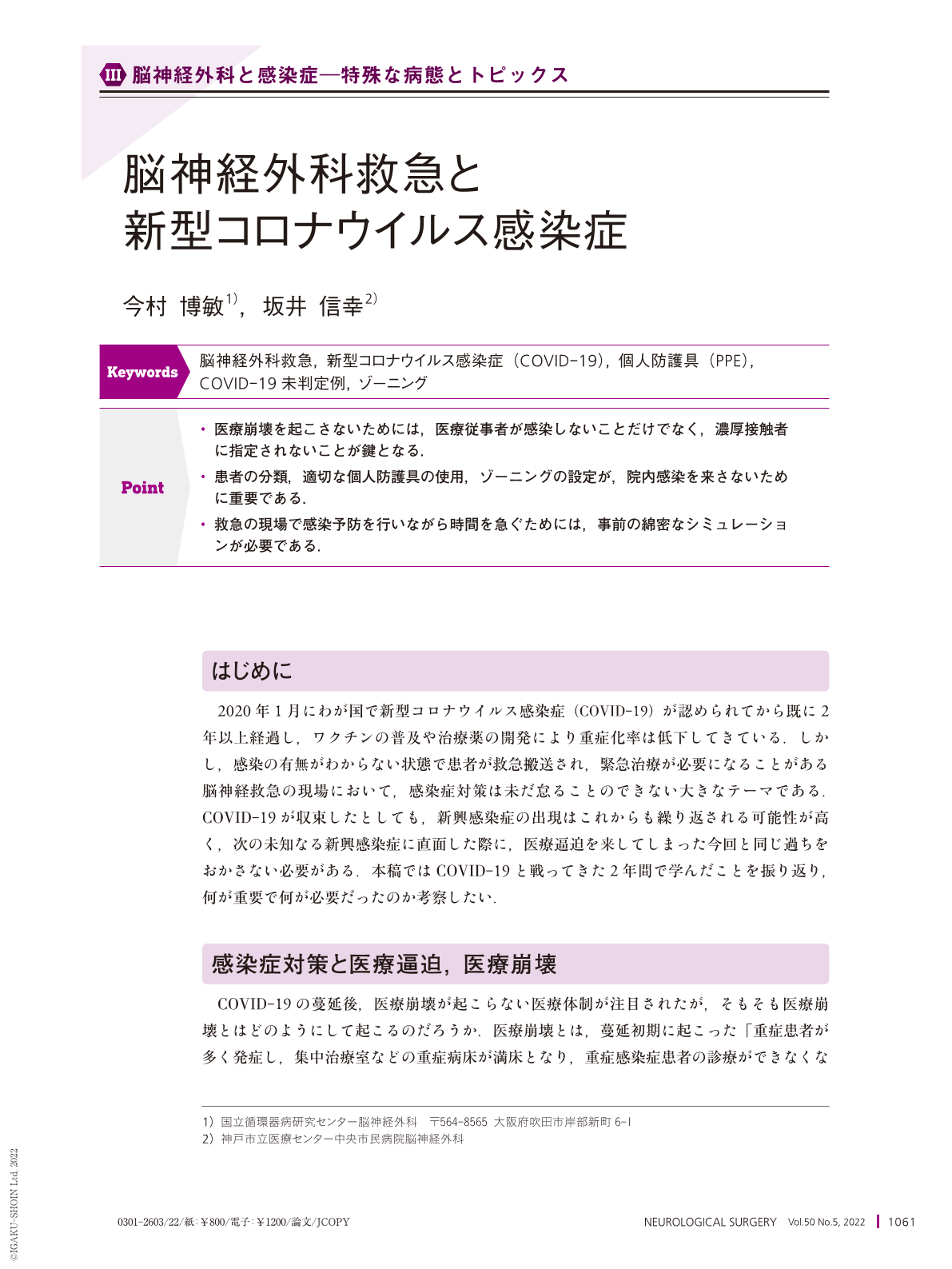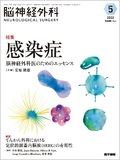Japanese
English
- 有料閲覧
- Abstract 文献概要
- 1ページ目 Look Inside
- 参考文献 Reference
Point
・医療崩壊を起こさないためには,医療従事者が感染しないことだけでなく,濃厚接触者に指定されないことが鍵となる.
・患者の分類,適切な個人防護具の使用,ゾーニングの設定が,院内感染を来さないために重要である.
・救急の現場で感染予防を行いながら時間を急ぐためには,事前の綿密なシミュレーションが必要である.
In neurosurgical emergencies during the coronavirus disease 2019(COVID-19)epidemic, both infection prevention and time reduction must be achieved. This requires patient identification, appropriate personal protective equipment(PPE), and zoning. First, based on information from EMS, the possibility of patients being infected with COVID-19 and medical history need to be evaluated. Patients are then classified as positive, suspected, or undetermined for COVID-19; no patient is classified as negative before testing during the epidemic. Patients who are unable to communicate their medical history due to conscious disturbance or aphasia are treated as undetermined or suspected cases of COVID-19. Wearing appropriate PPE is important, especially for undetermined or suspected cases. Although N95 masks are necessary only during procedures in which aerosols are generated, eye or face shields are necessary in situations with a high risk of splash exposure. Use of masks by patients is essential to reduce the risk of exposure. Once the patient arrives at the hospital, precaution should be taken to avoid break down of zoning during transport, in the examination room, and angio-suite. It is important to conduct in-depth simulations to ascertain the number of personnel required and the role and location of each staff member.

Copyright © 2022, Igaku-Shoin Ltd. All rights reserved.


